‘Eat the Problem’ or a Case for Use of Small-Diameter Logs in Specialty Mass-Timber Panels (2023)
LECH MUSZYNSKI, Oregon State University
In recent years, the development of mass timber panel technology in North America has generated a daunting list of ways it is expected to transform life on planet Earth and beyond. Evaluating them all is beyond the scope of this report, though many merit in-depth discussion.
It might be time, however, to revisit one of the proposed promises: that the level of homogenization achieved in reconstituted wood elements should allow low-value lumber to be used in robuststructural products. It’s not a new idea, and there is a long history of practical applications in a range of engineered wood products that offer larger dimensions, greater uniformity, and more predictability of crucial performance characteristics than are found in the pieces of lumber, veneer, or strands used to produce them.
That experience has inspired hopes that mass timber panels might become a value-added outlet for lumber generated from small-diameter logs, defined as less than 8 inches (203 millimeters) at the narrow end.1 Small-diameter logs constitute a substantial proportion of commercial harvests. That fraction may be even larger in slow-growing boreal forests, short rotation plantations, and selective harvesting operations like forest restoration programs.
The US Forest Service has adopted forest restoration programs, including thinning operations targeting smaller and lower-quality trees as an effective strategy for mitigating catastrophic wildfires and outbreaks of pests in Western forests. The goal is to restore fire resilience and improve the health and value of the remaining stands.These operations consume a substantial portion of the Forest Service budget, so the agency is seeking value-added markets for small-diameter logs and underused species generated as by-products to offset the higher costs of these programs.2 For various reasons, the uses of small logs for pulp, energy conversion, small-diameter veneer peeling, marginal use in roundwood construction and more, fall short of that goal, so there is a pressing interest in expanding the market.
Structural engineered products, such as glulam or Cross-Laminated Timber (CLT), have been consistently proposed as potential outlets. Pilot studies provide concept-level evidence that viable structural products may in fact be constructed from low-value material generated by forest restoration programs. The use of lumber from small logs in mass timber panels is beyond proof of concept. In Northern Quebec, Nordic Structures uses lumber sawn from small-diameter boreal black spruce to manufacture large glulam beams and CLT panels.3 It should be stressed, however, that these logs harvested from slow-growing boreal stands produce high-quality lumber. A model better reflecting the reality of the US market might be Vaagen Timbers, a company operating in northern Washington State, producing successful structural CLT panels with lumber sawn from small-diameter logs selectively harvested in contract forest restoration projects and processed by its parent company, Vaagen Brothers Lumber.4, 5
A string of research projects conducted at Oregon State University suggests that even CLT panels fabricated from low-grade materials can be used in low-rise modular housing units for rapid deployment in communities destroyed by natural disasters like wildfires, or in response to the affordable housing crisis in the region.6, 7, 8, 9, 10, 11 Turning the by-product of costly fire prevention operations in the Western region into a vehicle for reconstructing communities affected by wildfires and solving the affordable housing crunch would be a perfect example of the age-old “eat the problem” approach. Application of modular designs where a variety of building programs and functions may be achieved with a small set of repetitive prefabricated elements is expected to streamline the fabrication of mass timber panels and bring an anticipated economy of scale to an intrinsically noncommodity industry. (See the Mosaic Housing Case Study in Chapter 8)
Such development may require meeting several important prerequisites.
Improving predictability. Industry should be able to rely on the availability of small logs for local and regional sawmills, and mass timber manufacturers.In principle, the aim of forest restoration is to build the health and resilience of forests, and logs are a by-product. Typically, such programs may not be concerned with the logistics of transferring the generated materials to potential users. Forest restoration activities also vary widely across a mosaic of land ownership, making it difficult to plan long-term log procurement and financing methods.12 Communicating long-term forest treatment schedules, a comprehensive inventory of the volume marked for selective thinning, and rough assessment of expected quality to the mass timber sector would reduce the uncertainties and enable long-term investment planning. Developing treatment schedules in collaboration with the industry expected to provide a market for the small logs may go even further.
Developing capacity for efficient processing of small logs. Improving the predictability of the small-logs inventory and harvesting plans in a region may create an incentive for local lumber manufacturers to invest in technology to profitably process such material. Creating a suitable profit margin is not a trivial challenge because profitability diminishes with log diameters. For diameters below 8 inches (203 millimeters) on the narrow end, yields decrease dramatically. Not many sawmills can process such material efficiently. The resulting lumber may not be competitive in commodity-oriented markets unless there is a matching capacity to use such lumber in value-added structural products.
Developing design values for lumber from small logs and uncommon species. Construction applications require lumber certified for structural uses and assigned a grade with associated design characteristics. Structural grades are commonly assigned by an assessment of visual clues, including number, size, and position of knots or slope of grain, or by nondestructive measurement of physical properties, including density, bending modules, and stress wave propagation—all with known correlations to design characteristics. Both the grading rules and design characteristics associated with lumber species or species-groups commonly available for structural uses are outlined in the National Design Specification (NDS) for Wood Construction.13 The North American performance standard for structural CLT panels (PRG 320) requires that the laminations in the principal strength direction, those aligned with the pieces seen on the face of the panel, are grade No. 2 or better, while the transverse laminations are No. 3 or better for species recognized in NDS.14
The problem is that restoration projects generate small logs in species not commonly considered for structural uses. Even for species commercially harvested for structural uses, small logs are likely to produce lumber with larger proportions of juvenile wood, which does not meet the benchmark design characteristics for their respective NDS grades. New design values specific to the material generated in restoration projects must be established before the material can be accepted in certified structural wood-based composites like glulam or CLT, even if the prototype panels fabricated from such materials demonstrate predictable quality appropriate for low-rise modular applications.
Developing a robust modular design concept (preferably open source). For many reasons, the mass timber panel industry does not follow the usual commodity pattern. The main product of the industry is projects, with custom panel production but a step in a complex process that begins with design and ends with the assembly of a building shell at the construction site. Currently, most such projects commissioned in North America aim at the high end of the construction market with distinct, one-of-a-kind, high-visibility structures. Such projects are an unlikely market for large volumes of lower-grade mass timber panels, even if a certain portion of the elements in these structures could use them. An alternative robust modular design could be replicated in substantial numbers with as much variation as the modules would allow. This concept could apply to structures capable of rapid deployment as medium-range shelters, affordable housing, businesses like hotel chains, and community-oriented buildings such as schools, offices, and medical facilities as part of community rebuilding after widespread destruction (e.g., wildfires, floods, earthquakes). They could be designed of lower-grade structural mass timber panels. Such an approach could supply a market that would better match the volumes of small logs seeking a commercial home and provide a condition for the economy of scale in the sector.
Public awareness, community support, and coordination. One striking feature of the range of challenges and opportunities described above is that at both ends, the challenges exceed the realm of pure market forces. One is aimed at mitigating the risks of destructive wildfires in the immediate future, the other at responding to recent disasters. Both are imperatives rooted in the basic human need for safety and security. Though both often concern the same community leaders and legislatures, they are rarely seen as two ends of the same fundamental problem. Thus, they are dealt with asynchronously by different agencies and budgeted separately.15 The key to addressing these issues in an efficient way is to build awareness of the synergies of the goals of the regional Forest Service, public agencies concerned with mid- and long-term response to natural disasters, and businesses that process small logs into engineered wood products offered in service of the communities touched by destructive disasters and acute shortages of affordable housing.
1 Magnus Fredriksson et al. “Using Small Diameter Logs for Cross-Laminated Timber Production,” BioResources 10 no. 1 (2015): 1477-1486. https://Bioresources.Cnr.Ncsu.Edu/Resources/Using-Small-Diameter-Logs-For-Cross-Laminated-Timber- Production/
2 “Wood Innovation Program,” Forest Service, US Department of Agriculture. Accessed on Sept. 15, 2022: https://www.fs.usda.gov/science-technology/energy-forest-products/wood-innovations-program
3 “Chantiers-Chibougamau Manufacturing Plant,” Nordic Structures. Accessed on Nov. 4, 2022: https://www.nordic.ca/en/projects/structures/chantiers-chibougamau-manufacturing-plant
4 Vaagen Timbers. Accessed on Nov. 4, 2022: https://www.vaagenbros.com/.
5 Vaagen Brothers Lumber. Accessed on Nov. 4, 2022: https://vaagentimbers.com/about.
6 Christina Lawrence, “Utilization of Low-value Lumber from Small-diameter Timber Harvested in Pacific Northwest Forest Restoration Programs in Hybrid Cross Laminated Timber (CLT) Core Layers: Technical Feasibility” (master’s thesis, Oregon State University, 2017) 147 pp.
7 Brent Lawrence, “Utilization of Low-value Lumber from Small-diameter Logs Harvested in Pacific Northwest Forest Restoration Programs in Hybrid Cross Laminated Timber (CLT) Core Layers: A Market Response” ” (master’s thesis, Oregon State University, 2017) 99 pp.
8 Sina Jahedi, “Defining Project‐specific Custom CLT Grade Utilizing Low‐value Ponderosa Pine Lumber from Logs Harvested in SW Oregon and Northern California Forest Restoration Programs” (Ph.D. dissertation, Oregon State University, 2022) 117 pp.
9 Sina Jahedi et al. “MOE Distribution in Visually Graded Ponderosa Pine Lumber Harvested from Restoration Programs in Southern Oregon and Northern California,” Wood and Fiber Science 54, no. 2 (2022): pp. 75-80
10 Sujit Bhandari, “Modular Cross Laminated Timber Structures Using Underutilized Ponderosa Pine” (2022) 174 pp.
11 Sujit Bhandari et al. “A Review of Modular Cross-Laminated Timber Construction” Submitted to Journal of Building Engineering (2023) p: 105485. In Press.
12 Chung W., N. Anderson, F. Belart, Y. Chen, R. De Amicis, J. Hogland, J. Johnson, J. Kim, K. Lyons, L. Muszyński, N.Streletskaya (2022): Smart Forestry: Paving the Way from Forest Restoration to Mass Timber. Component of Build Back Better with Mass Timber BBBRC. DOC EDA Program, Award # 07-79-07914
13 American Wood Council, NDS Supplement National Design Specification Design Values for Wood Construction. (Leesburg, VA, 2018)
14 ANSI/APA. ANSI/APA PRG 320:2019 Standard for Performance-Rated Cross-Laminated Timber. (2020). for Wood Construction.13 The North American performance standard for structural CLT panels (PRG 320) requires that the laminations in the principal strength direction, those aligned with the pieces seen on the face of the panel, are grade No. 2 or better, while the transverse laminations are No. 3 or better for species recognized in NDS.14
15 Daniel L. Sanchez et al., Literature Review and Evaluation of Research Gaps to Support Wood Products Innovation. Technical Report of the Board of Forestry and Fire Protection Joint Institute for Wood Products Innovation. Submitted to the California Board of Forestry and Fire Protection: Agreement # 9CA04450. (2020) 116 pp.
Download PDF
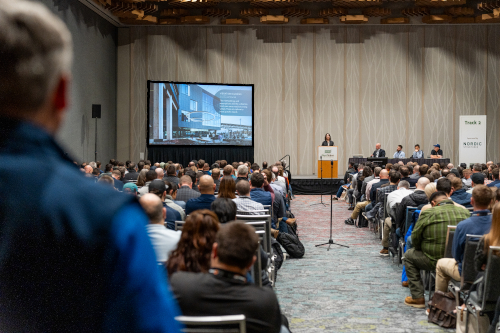 View the Agenda
View the Agenda
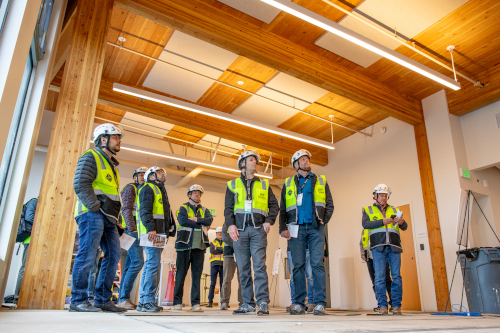 Book a Building Tour
Book a Building Tour
 Book Your Exhibit Space
Book Your Exhibit Space
 Explore the Exhibit Hall
Explore the Exhibit Hall
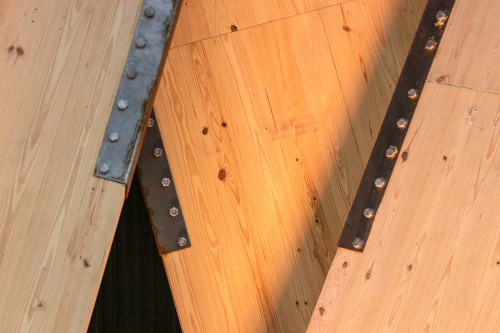 Become a Sponsor
Become a Sponsor
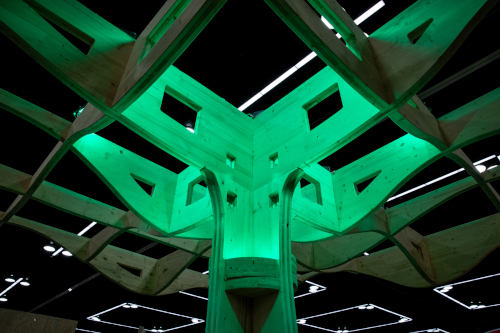 View Sponsors & Partners
View Sponsors & Partners
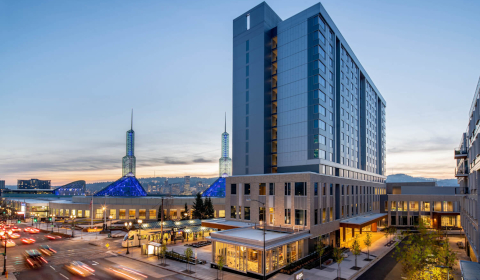 Reserve Hotel Rooms
Reserve Hotel Rooms
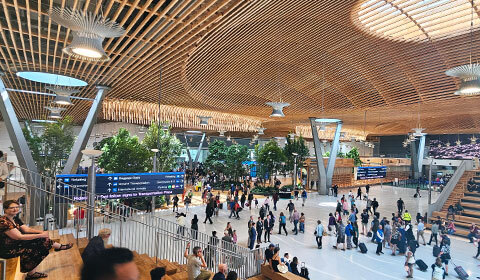 Discounted Plane Tickets
Discounted Plane Tickets
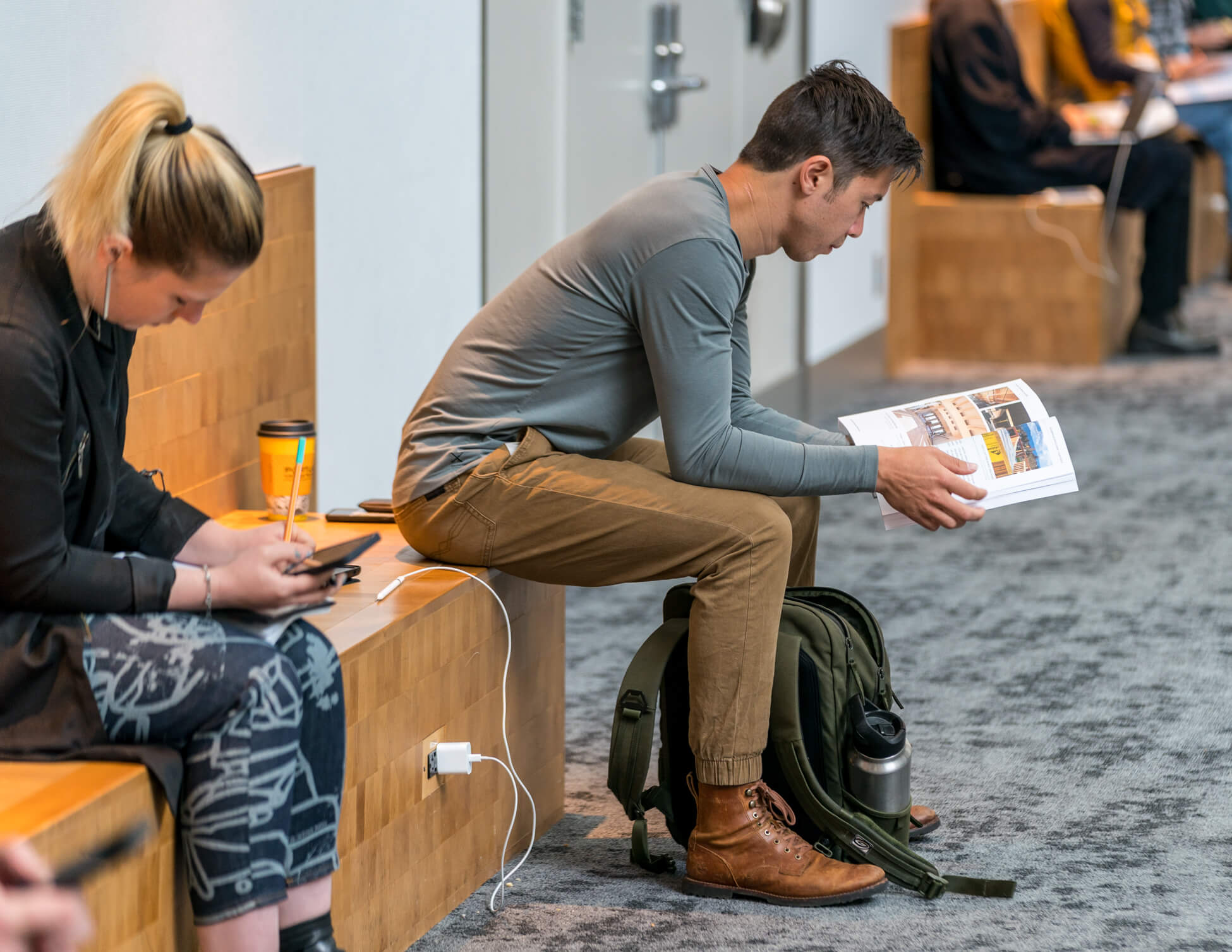 Read Case Studies
Read Case Studies
 Purchase Past Reports
Purchase Past Reports